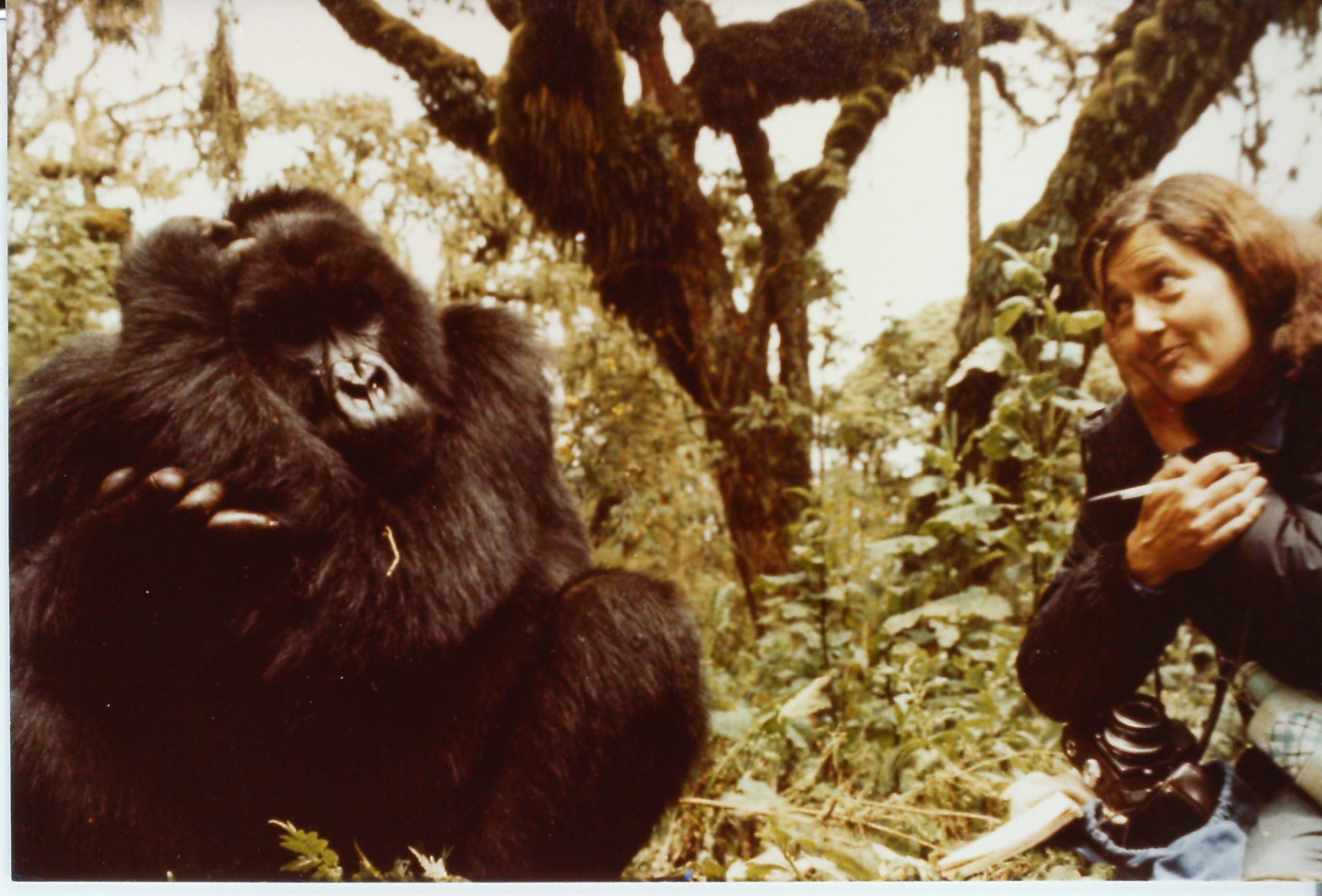The Dian Fossey Gorilla Fund has studied golden monkeys in Rwanda for years, because they are a critical part of gorilla habitat, as well as a fascinating facet of the forest’s biodiversity. They are also an endangered species and it is believed that their population is declining.
Our golden monkey research was initiated by our biodiversity research program manager Deogratias Tuyisingize, who first arrived in our field programs as an intern in 2004 and is now completing his Ph.D. research through the University of Rwanda on conservation of the golden monkey and its habitat, as well as overseeing our expanded biodiversity programs.

This month, much of this work culminated in the first-ever regional golden monkey conservation action plan workshop, in which stakeholders from the parks where golden monkeys live, as well as other conservationists and community representatives, were in attendance. Tuyisingize and other experts presented information on golden monkey ecology, including population trends, habitat and diets, threats and other issues.
The workshop was the first step in creating an action plan, following input from all participants and an additional meeting early next year to determine a five-year strategy, with specific objectives, timelines, budgets and responsibilities of the various organizations. In addition, international institutions and researchers will also be invited to join in the process.
Research efforts increasing
In addition to collecting research directly, remote cameras were recently added to the golden monkey data collection efforts. “Camera traps can help us collect information on elusive phenomena, operate in difficult areas, and can work day and night,” says Tuyisingize.
This will help to answer some key questions about the animals’ social system, he says, and may also provide information on natural predators, such as chimpanzees and carnivores. In addition, the cameras may be able to detail the frequency of any illegal human activities in those areas, including the species that are being hunted.


Learning about birthing seasons
In the past two months our field staff recorded numerous births in one of golden monkey groups we monitor, and we expect there will be many more soon. Our research indicates that this group’s birthing season runs from September through November, so we are anxious to see how many infants will be born this time, which females give birth, and how the infants progress.
The other golden monkey group we monitor gives birth at a different time of year – from February to April. In both cases, the births take place during the season when bamboo plants are in the shooting phase. Bamboo is a key food item for the golden monkeys (and mountain gorillas enjoy the shoots as well).
Cool facts about golden monkeys
- The golden monkey is also known as the golden guenon.
- The golden monkey is only found in two isolated habitat fragments: the Virunga massif and Gishwati forest.
- In Volcanoes National Park, the golden monkey is the only other primate living in the gorillas’ habitat.
- Golden monkeys have cheek pouches that help them store their food while eating.
- The golden monkeys we observe live in multi-male, multi-female groups.
- Golden monkeys don’t build ground nests like gorillas. Instead, they sleep in trees.






